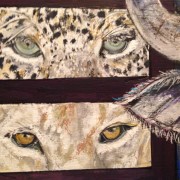Entrance Gates of the Kruger National Park
Entrance Gates of the Kruger National Park
The following are the list of entrance gates of the Kruger National Park:
- Berg-en-Dal
- Crokodile Bridge
- Letaba
- Lower Sabi
- Mopani
- Olifants
- Orpen
- Pretoriuskop
- Punda Maria
- Satara
- Shingwedzi
- Skukuza
Gus Adendorff writes in his book “Wild Company”, which was published in 1984, that he was a ranger in the Kruger National Park from 1 May 1950 to 31 March 1977. In his book he talks about many of the above gates.
Adendorff explains about one incident near Punda Maria where he was patrolling, specifically combating fires because of the drought and thus water supply for the African Wildlife as well. Also, note that in those days these rangers would patrol extreme vast areas of the Kruger National Park on foot or horseback as part of nature conservation. So Adendorff set out with 2 game guards for protection and two donkeys to carry their supplies. They were heading towards the Luvuvhu River when one of the guards stopped and whispered that elephants are coming in their direction. The elephants noticed them and immediately stampeded towards them. The group headed for higher ground but could do nothing about the donkeys that remained standing in harms way. Needless to say, Adendorff taught at that very moment that was the end of the donkeys. However, the leading elephant stopped three meters from the donkeys. No doubt that the elephants have never seen such creatures, thus, the next moment the elephant turned, trumpeted and the whole group ran away. The poor donkeys showed no concern at all, remained standing blissfully unaware of the situation.



